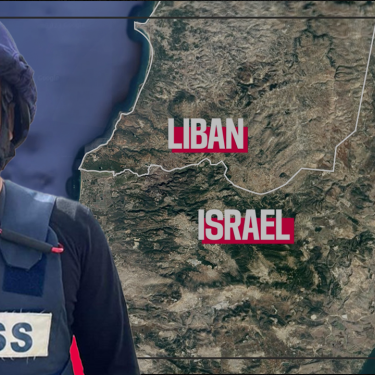Killing of Issam Abdallah in Lebanon: four new investigations confirm RSF’s conclusions, and reveal Israeli tank round killed Reuters journalist.

Investigations by Amnesty International, Human Rights Watch (HRW), Agence France-Presse (AFP) and Reuters into an Israeli army attack that killed a Reuters reporter in southern Lebanon on 13 October concur with the findings of the investigations carried out by Reporters Without Borders (RSF), which joins the call by the two NGOs for an international investigation into likely war crime by Israel
Amnesty International and HRW held a joint press conference in the Lebanese capital on 7 Decembe at which they revealed the findings of their investigations into the 13 October attack near the village of Alma el-Chaab in southern Lebanon that killed Reuters journalist Issam Abdallah and wounded six other reporters. Reuters and AFP separately published the findings of their own investigations on the same day.
The investigations all conclude that an Israeli tank round killed Abdallah in what Amnesty International called “a direct attack on civilians that must be investigated as a war crime.”
Ramzi Kaiss, a researcher at HRW’s Middle East and North Africa Division, told RSF that, their investigation reveals “the Israeli military knew or should have known that the group of people they were firing at were civilians.” He added that it was an “apparent deliberate attack that should be investigated as a war crime.”
The investigation published by RSF on 29 October revealed that the place where the journalists were located was clearly targeted by two consecutive strikes coming from the east, from the direction of the Israeli border, and that the Israeli forces were in a position to identify the journalists.
“Independent investigations carried out by Human Rights Watch, Amnesty International, AFP and Reuters concur with RSF's conclusion that the place where the clearly identifiable journalists were located was targeted by strikes from the direction of Israel. These new investigations were able to prove that it was indeed Israeli fire that killed the journalist Issam Abdallah and injured Christina Assi and his five other colleagues. In the light of this revelation, RSF joins the call by the two NGOs for an official, independent and impartial international investigation into a possible war crime by Israel against the seven journalists.”
By analyzing video and photographs from the site, as well as weapon fragments, and by interrogating witnesses, Amnesty International and HRW were able to definitely conclude that the first shot, which killed Abdallah and injured AFP correspondent Christina Assi, was an 120 mm Israeli tank shell. According to Amnesty International, it was “most likely an M339 projectile, manufactured by the Israeli IMI Systems” that killed Abdallah and that “analysis indicates it was fired from an Israeli position close to Jordeikh, east of the journalists.” HRW added that, “the journalists were most likely visible and identifiable to the Israeli military at the time of the attack."
When asked about the findings of the four organisations in a televised briefing, the Israeli government spokesperson Eylon Levy said: "We do not target civilians."
Two Iraqi photo-journalists working for Reuters, Thaer al-Sudani and Maher Nazeh, sustained relatively minor injuries in the Israeli attack that killed Abdallah. But Carmen Joukhadar, a Lebanese reporter for Al Jazeera, and photo-journalist Elie Brakhya were badly injured and were hospitalized for two weeks. Christina Assi sustained life-altering injuries, spent several weeks in intensive care and continues to be hospitalized. Dylan Collins, a US photographer working for AFP, was injured during the second strike while trying to help Assi. He had been badly injured by the explosion of a Russian drone three months before, while covering the war in Ukraine.
